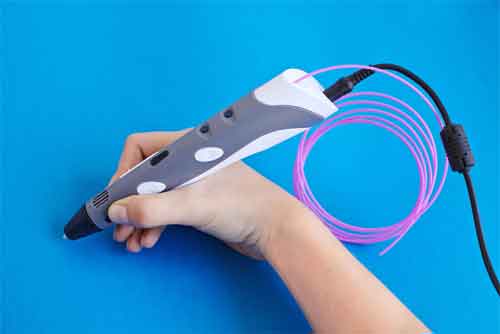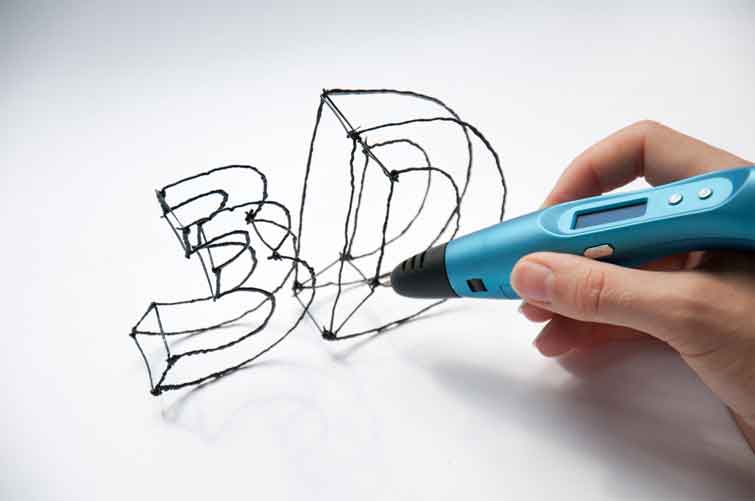The history of 3D pens is still one that’s being written as this article goes to print. But there’s at least a year’s worth of showing the possibilities of taking a pen and literally drawing something in thin air. Most of this short history comes in one product called the 3Doodler that became the first 3D pen on the market after a successful Kickstarter campaign. While the financial success of the pen might have been due to being blinded by the excitement of the technology, it proved there were still problems in creating exactly what someone had in mind. In other words, it was as if someone else took over your brain and created a slight variation of what you were doodling on a piece of paper.
While those problems didn’t make it a complete failure in bringing a wow factor to drawing in the air, they may have to make improvements in order to compete with a new pen that’s out now. Called the Lix 3D pen, it’s designed by a British company that’s also going through a Kickstarter campaign. With success there recently, it makes a lot of improvements in being able to create just about anything accurately, as long as you get used to doodling in thin air.
Someone using a 3D pen for the first time may find it a bit awkward when you consider you have to press a button to extract the plastic filament that emanates from the pen. Thanks to the ability to properly convey what you want to draw, it shows the quick evolution in 3D pen technology and the potentials for what it can do. Especially in brainstorming sessions in companies, the ability to create something tangible out of a air doodle is now the stuff that gives more competitive edges to companies.
What Can a 3D Pen Create in a Brainstorming Session?

Considering the filament that extracts from the pen is only a black color, you still have some limitations on how elaborate you can make your instantaneous creations. You can’t make multi-colored or overly complex creations you could create on a desktop 3D printer. Nevertheless, you can still create 3D objects to gain a rough idea of a product idea or some other concept a creative employee in the company wants to convey. In some cases, you could create something that sells on its own, depending on how exacting you are with the pen.
While the intention might be to use in a brainstorming session with other people, doodling usually works the best on your own time when it’s quiet. With that in mind, giving your employees a 3D pen to use at their own desk could end up creating something brilliant and fresh from the subconscious. Creating something spontaneously is going to save a lot of time than going through the protracted process of a 3D CAD software program. By the time something gets designed there, ideas can sometimes get excessive thought that takes away from innovations caught in the immediate act of creation.
It’s why using a pen on someone’s own time may be the best advantage to your creative staff. Any issue comes in getting used to doodling in the air after generations of people learning how to doodle on paper. Also, drawing any object has to be drawn slowly in order to allow the filament to extract from the pen. We’re not quite to the point where you can create a 3D object from a quick draw.
As far as artwork is concerned, the promotional video on the Lix 3D pen shows various things that can be created, though perhaps not to all tastes. Part of this is creating material to use on T-shirts for those who love wearing more creative wardrobe. Art pieces are also subjective in quality, despite any artwork you create with it likely garnering both derision and love.
Your best bet is to give each of your creative staff one of these pens so you can all create tangible ideas from the subconscious to share and perhaps put together into something cohesive. The true beauty of 3D printing is being able to hold something tangible in the palm of your hand so you can gain a more astute sense of the world while also better assessing creativity.











 How To Naturally Relieve Those Pesky Mosquito Bites
How To Naturally Relieve Those Pesky Mosquito Bites